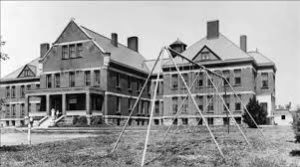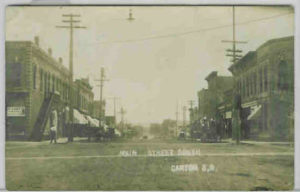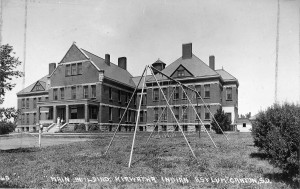Early newspapers performed a social function by letting their readers know what fellow citizens were doing. Papers in larger cities usually confined their news to the well-to-do or the socially prominent, but small town papers reported on ordinary citizens–sometimes on matters that families might have preferred to keep private. On June 10, 1904, Canton’s The Sioux Valley News said: “Last Friday an attendant came up from Yankton and returned on the afternoon train, taking with him John Bergstrom and Axel Olson who will be placed in the hospital for the insane for treatment.”
On the same page, a somewhat unflattering item read: “Wm. Robinson Jr., arrived from Chicago Monday noon for a few days’ visit with his parents in his city. Billy . . . looks natural. However he has grown much heavier since becoming a resident of Chicago.”
Newspapers reported on citizens’ visits and trips much as we post items on social media today. “J. C. Neyhart left Wednesday afternoon for Maxwell, Iowa to visit his daughter . . . Ed L. Wendt took a trip up to Wolsey Wednesday in company with some prospective land buyers . . . Dr. Chas. W. Morrison went over to Inwood Monday afternoon to look after some business matters,” are typical items from a 1909 edition of The Sioux Valley News.
Such gossipy details about their fellow townspeople probably connected and unified the community, but newspapers could also filter their news. Because The Sioux Valley News was so upbeat and pro-Canton in its reporting, it failed to inform citizens about abuses or problems at the Canton Asylum for Insane Indians. Some specifics may have been neatly hushed by the asylum’s management, but the paper’s editor undoubtedly knew about many of its problems and failed to report on them.



























